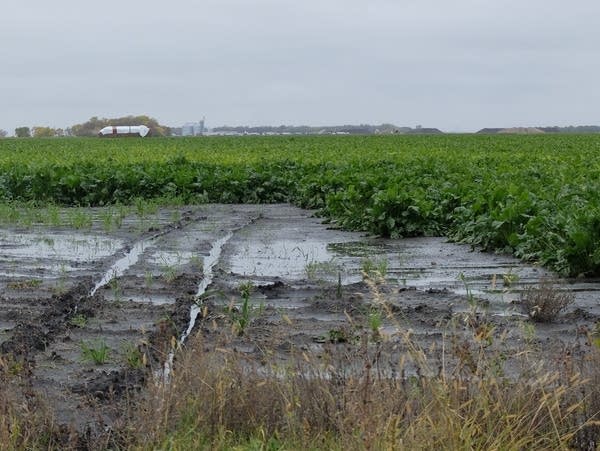‘The stress is unbearable at times’: Farmers wait, hope as weather delays harvest

Saturated soil is delaying the fall harvest for many farmers. This sugar beet field near Stephen, Minn., is seen on Wednesday, Oct. 9. More than an inch of additional rain fell after the photo was taken.
Dan Gunderson | MPR News
Go Deeper.
Create an account or log in to save stories.
Like this?
Thanks for liking this story! We have added it to a list of your favorite stories.


